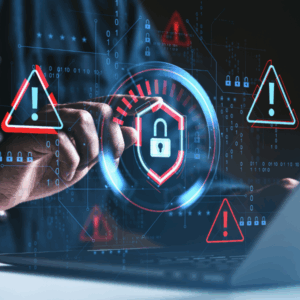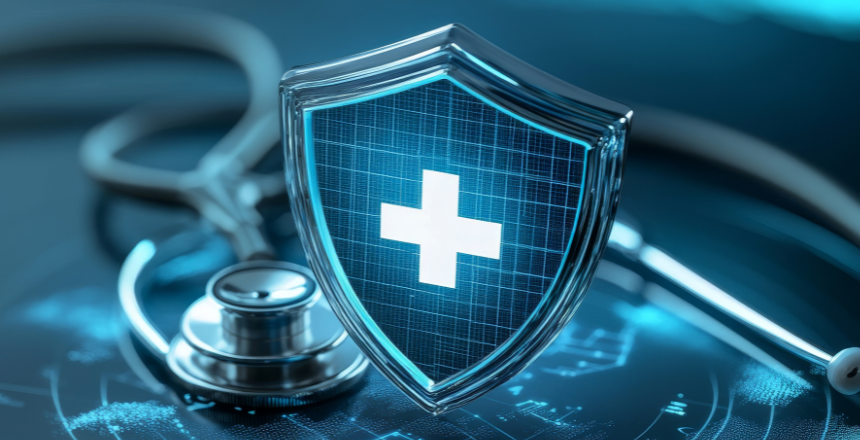Your healthcare organization is facing some serious cybersecurity challenges, and we get it. The pressure is real. As cyber threats keep getting smarter and more persistent, healthcare providers like you need to make a choice: get ahead of this now, or leave your practice vulnerable.
Here’s something that might surprise you: a recent CSO Online article shared that in 2023, more than 136 million healthcare records were breached. That’s a 170% jump from the year before. And honestly, that was just the beginning.
In 2024, things got even tougher. A staggering 276.7 million patient records were compromised, affecting over 80% of the U.S. population. The Change Healthcare ransomware attack was one of the biggest hits, disrupting healthcare supply chains across the country and impacting around 190 million people.
“Healthcare has become the number one target because it’s sitting on a goldmine of sensitive data, and frankly, most practices just aren’t protected well enough,” says Antwine Jackson, President of Enitech. “Cybersecurity isn’t something you can put off anymore. It’s not a question of if you’ll get targeted it’s when. The real question is, how ready will you be when it happens?”
Why Healthcare Gets Targeted So Much
Beyond all the compliance requirements and older systems, healthcare organizations handle an incredible amount of sensitive information. Every single year:
- A single hospital can generate over 50 petabytes of data from electronic health records (EHRs), imaging, lab results, genomics, and administrative systems.
- The healthcare industry produces exabytes of data, growing at over 20% annually.
- Roughly 90% of that data is regulated or considered sensitive. Way more than most other industries deal with.
That complexity makes healthcare a prime target for bad actors. Unfortunately, many smaller providers are still working with legacy systems, weak authentication, and little to no cybersecurity training for their teams.
Healthcare cybersecurity challenges include managing endpoint complexity, securing medical devices, ensuring data security, and protecting sensitive patient data from identity theft and data breaches. The Health Sector Coordinating Council Cybersecurity Working Group keeps emphasizing that cyber safety is patient safety and we couldn’t agree more about this critical connection between healthcare cybersecurity and patient care.
Another challenge that keeps coming up involves third-party vendors and suppliers who need access to your healthcare networks. When these external partners have vulnerabilities, they can become entry points for attackers, potentially putting your entire healthcare system at risk. That’s why robust security measures and continuous monitoring of third-party access is so important for protecting sensitive health information and keeping your healthcare networks secure.
Common Cybersecurity Threats You’re Up Against
Healthcare organizations like yours face several cybersecurity threats, and we see these all the time:
- Ransomware attacks that lock down your critical medical systems and disrupt patient care. The 2024 ransomware attack on Change Healthcare really showed how these can cripple key parts of the U.S. healthcare supply chain, affecting millions of patients.
- Phishing campaigns targeting your staff to get access to sensitive information. These usually involve sneaky emails that look like they’re from trusted sources, tricking your healthcare workers into sharing login credentials or downloading malware.
- Data breaches that expose patient data and intellectual property. Take the breach that compromised over 276 million patient records in 2024 – it became one of the largest healthcare data breaches ever and affected over 80% of the US population.
- Distributed denial-of-service (DDoS) attacks that overwhelm your network traffic and disrupt services. These attacks flood your healthcare networks with way too much traffic, causing system outages and delaying critical patient care.
- Supply chain vulnerabilities where third-party vendors become entry points for cyber attacks. For example, when software providers or medical device manufacturers get compromised, they can accidentally introduce malware into your healthcare networks.
Understanding these attack types is essential for effective incident response planning and strengthening your cybersecurity programs.
What You Can Do Right Now
Whether you’re running a private practice or managing multiple locations, here are some immediate steps we recommend to reduce your cyber risk:
Get 24/7 Endpoint Detection and Response (EDR) Working for You
You can’t protect against what you can’t see. EDR solutions detect and isolate threats before they spread, helping protect your critical infrastructure and medical devices.
Schedule Regular Penetration Testing
Let’s find your weaknesses before the bad guys do. Enitech offers complimentary Penetration Testing (valued at $4,999) for qualifying healthcare providers to assess vulnerabilities in your network and systems.
Train Your Team to Spot Threats
Most breaches start with just one click. Training programs that teach your staff how to identify phishing attempts and follow security protocols are crucial for reducing cybersecurity threats.
Back Up Everything – Securely and Off-Site Then Test The Process
When ransomware hits, you need immutable backups stored safely outside your network’s reach to ensure business continuity and protect patient outcomes. But here’s the thing backing up data is just the first step. You need to regularly test those backups to make sure the data can be restored quickly and accurately when you need it. Without routine verification, backups might be corrupted or incomplete, making them useless when you need them most.
Have A Business Continuity Plan
It’s important to have a comprehensive business continuity plan that spells out how your organization will keep critical operations running during and after a cyber incident. This plan should detail roles, responsibilities, communication protocols, and recovery procedures. But the most important part of any business continuity strategy is consistent testing. By regularly running cyberattack scenarios and recovery processes, you make sure your team knows exactly how to respond, identify any gaps in the plan, and verify that all systems and backups work as intended. This proactive approach minimizes downtime and protects patient care when disaster strikes.
Move to a Zero Trust Architecture
Stop assuming internal traffic is safe. Verify all access at all times, enforce multi-factor authentication, and monitor remote access to minimize security risks.
The Cost of Healthcare Data Breaches
 Healthcare data breaches continue to have a staggering financial impact on the industry. According to a IBM Cost of a Data Breach report, the average cost of a healthcare data breach has reached nearly $10 million, making it one of the most expensive sectors to experience cyber incidents. This figure reflects not only the direct costs of managing and mitigating breaches but also indirect costs such as regulatory fines, legal fees, reputational damage, and the loss of patient trust.
Healthcare data breaches continue to have a staggering financial impact on the industry. According to a IBM Cost of a Data Breach report, the average cost of a healthcare data breach has reached nearly $10 million, making it one of the most expensive sectors to experience cyber incidents. This figure reflects not only the direct costs of managing and mitigating breaches but also indirect costs such as regulatory fines, legal fees, reputational damage, and the loss of patient trust.
The high cost is driven by the sensitive nature of healthcare data, including medical records and personal information, which requires stringent protection and rapid response when compromised. Additionally, healthcare organizations face increased expenses related to incident response planning, cybersecurity measures, and compliance with regulations such as HIPAA.
With healthcare becoming a primary target for threat actors due to the value of its data and the complexity of its systems, investing in robust cybersecurity programs and proactive risk management is essential to reduce the financial and operational consequences of breaches.
Staying Compliant and Working Together
 Healthcare organizations need to navigate complex regulations like the Health Insurance Portability and Accountability Act (HIPAA) in the U.S., which requires strict protections for patient data. Compliance isn’t just about avoiding fines, it’s a critical part of protecting patient safety and clinical outcomes.
Healthcare organizations need to navigate complex regulations like the Health Insurance Portability and Accountability Act (HIPAA) in the U.S., which requires strict protections for patient data. Compliance isn’t just about avoiding fines, it’s a critical part of protecting patient safety and clinical outcomes.
Industry collaboration matters too. Groups like the Health Sector Coordinating Council and its Cybersecurity Working Group provide guidance, best practices, and cyber threat intelligence sharing to help healthcare organizations stay ahead of evolving threats.
Why We’re the Right Partner for You
Enitech specializes in HIPAA-compliant IT and cybersecurity solutions designed specifically for the healthcare industry. From secure Microsoft 365 deployments to cloud backup and disaster recovery, we protect what matters most your patients, your data, and your peace of mind.
“We don’t just patch vulnerabilities we build systems that are resilient by design,” Antwine says.
“Cybersecurity should feel like a seatbelt, something you wear every day without thinking about it, but that could save your life when it counts.”
Your data is already being targeted. The only question is whether you’re protected.
Schedule a free consultation or claim your FREE Pen Test today.
Call (877) 952-8324 or fill out our contact form to get started.









